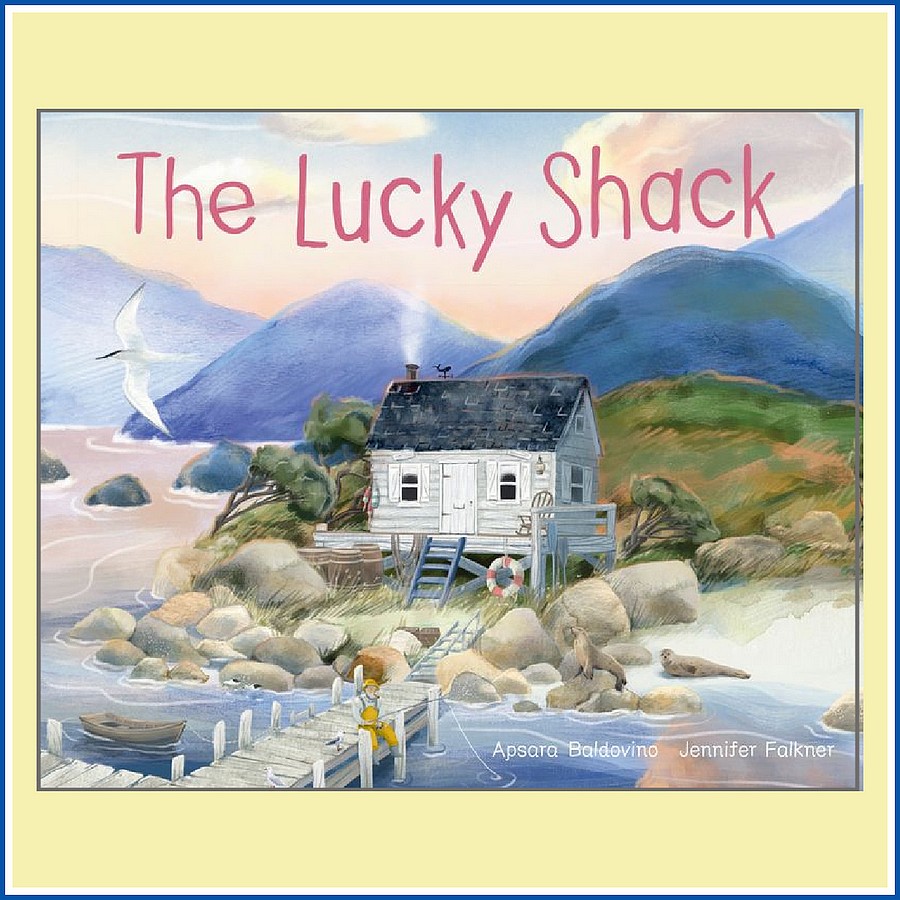
The Lucky Shack by debut creators Apsara Baldovino and illustrated by Jennifer Falkner shares the thoughts, feelings, changing seasons and lifecycle of a quaint cosy shack on the foreshore through the voice, eyes and heart of the shack. Nestled in a prime position, this shack has appreciated postcard perfect views, been cared for by a fisherman, enjoyed company, weathered storms, fallen into disrepair, been lovingly restored and become full of life again. This story explores the changing identity of the shack over the years.
Examples of personification abound in this story that contains themes relating to connection to places, belonging, family, resilience and the natural world. This text engages the reader to actively shape meaning as they consider the viewpoint of the shack and question and respond to what is not included in the narrative, giving readers agency to create their own story and draw conclusions, such as what happened to the fisherman? Why did he stop coming to the shack? Who is the new owner and does she have a history with the shack?
This shack is built by a fisherman who carefully and lovingly maintains it. It is grateful for the weekly visits from the fisherman and appreciates the music and warmth that radiates throughout when he is present. Until one day he no longer visits. A darkness descends, the beautiful colours and joys the shack once experienced are now gone. The sights, sounds and smells that once permeated the shack and brought such joy are missing. As feelings of loneliness set in, the shack deteriorates, but holds onto hope that brighter days are coming. In a moment of courage, events unfold and hope is indeed on the horizon leading to a new, bright beginning and future for the shack.
The story of the shack is one which is universal. During times of happiness and contentment life is rich, full of colour and a meaning and purpose exists. While during times of loss and change, there can be a sense of vulnerability and loneliness. This ebb stage for the shack is a time of reflection and discovery. Joy and beauty once again become part of its life.
The stunning atmospheric illustrations deftly portray the different seasons, gamut of emotions and all that life has to offer living by the sea. The striking use of colour to symbolise the different emotions and reflect the changing seasons is spellbinding. The peace and serenity captured on the final pages is palpable and moving.
This story serves as an excellent stimulus for students to respond to a task: ‘if these walls could talk’ as they write or draw what a structure may communicate through different seasons of its life.
